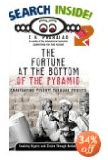Procter & Gamble looks to poor markets for growth
Procter & Gamble looks to poor markets for growth
mongabay.com
July 15, 2007
Procter & Gamble Co. is aggressively expanding into “bottom of the pyramid” markets in an effort to grow sales, reports Monday’s edition of The Wall Street Journal. The consumer products giant is formulating products specifically for some of the world’s poorest people.
Lagging behind its competitors in these fast growing markets, “P&G has been deploying its armies of researchers, product developers and merchandising wizards to better understand both high-frequency-store shoppers, owners and the haphazard distributor networks that stock them.” High-frequency stores are stalls and kiosks that are often visited multiple times a week by a customer who typically makes small, single-serving purchases. P&G estimates that there are some 20 million high-frequency stores world-wide.
The Wall Street Journal explains P&G’s strategy for product development in these markets:

|
In marketing goods to low-income shoppers, P&G tries to keep in mind their budget constraints and even the coins they carry. Because they are often paid a daily wage, Mexican customers generally carry five- and 10-peso coins. “If you want to sell to low-income consumers, you have to know what’s in their pockets,” Mr. Riestra says. “It doesn’t make sense to have something cost 11 or 12 pesos.”
To ensure satisfactory profit margins, P&G uses what it calls “reverse engineering.” Rather than create an item, and then assign a price to it — as in most developed markets — the company first considers what consumers can afford. From there, it adjusts the features and manufacturing processes to meet various pricing targets…
P&G says that reverse engineering helps to keep the company’s after-tax margins “comparable” to those in wealthier, developed countries.
Internally, P&G emphasizes to its employees that products developed for emerging markets must “delight, not dilute.” Quality, executives say, is still critical. “You cannot trick a low-income consumer, because they can’t afford to buy products that don’t work,” says Mr. Riestra. If a product doesn’t perform, “they won’t ever buy you again, and they’ll tell everyone they know about it, too.”
Related
A long-term approach to helping the poor in Africa through private enterprise. This past Saturday millions of people watched the anti-poverty “Live 8” concerts held in London, Tokyo, Johannesburg, Paris, Rome, Berlin, Moscow, Philadelphia and Barrie, Canada. Live 8 coincides with tomorrow’s G8 summit of world leaders and aims to raise awareness of the need for aid, debt relief and fairer trade for Africa. While the cancellation of debt and delivery of aid to Africa is a noble and needed cause for a desperately poor continent, policy makers will need to ensure that funds are spent wisely to maximize the benefits for the largest number of Africans. In the past, aid to the developing world has met mixed reviews. Some of the largest recipients of aid are still some of the world’s poorest countries. What’s going on here? Have aid agencies just been throwing money into a hole?
“Gray Corps” of senior citizens could help fight poverty, health problems in developing world. Americans are wealthier and older than ever before. According to recent data released by the U.S. Centers for Disease Control and Prevention, in the United States, the proportion of the population aged 65 years and over is projected to increase from 12.4% in 2000 to 19.6% in 2030. In counting numbers, this means the number of persons aged 65 and older is expected to increase from approximately 35 million in 2000 to an estimated 71 million in 2030, while the number of persons aged 80 and older is expected to increase from 9.3 million in 2000 to 19.5 million in 2030. What these adults will do when they retire from the work force remains to be seen. While many will continue working until ages considerably older than previous generations, many will seek a comfortable retirement. Some, however, will want to devote a portion of their time to helping the less fortunate. It is this growing segment of the population that could be key to addressing a number of looming social issues both here in the United States and abroad.
Comments
I just read the post about Proctor & Gamble’s effort to develop markets in developing countries with great interest. One of the challenges for them and to accelerate growth is changing their mindset about how they do business. Rather, identify and seek out existing entrepreneurs that serve local needs and help build scale and capacity, and enter licensing agreements to sell their products in similar regions. This creates greater economic returns for the locals, P&G does good and the locals have “more” cash to spend on P&G products. In other words, help them make their pockets fatter and they can get a greater profit. A good example, would be a company like PlumpyNut. While this is a food product, the people in the regions stand to have a better chance at being productive and thus earning wages. P&G will have to get comfortable with smaller profits in smaller increments and focus on the enormity of the market. By also leveraging the innovations that take place in developing countries P&G, assuming they are open minded, can learn about what the locals do and help make things better. The chewing stick comes to mind, since many people don’t like toothpaste or have water to rinse, helping to sell more, means that local entrepreneurs have more cash and thus more money to spend on other necessities.
Lafayette Howell
founder & owner | spangy.com